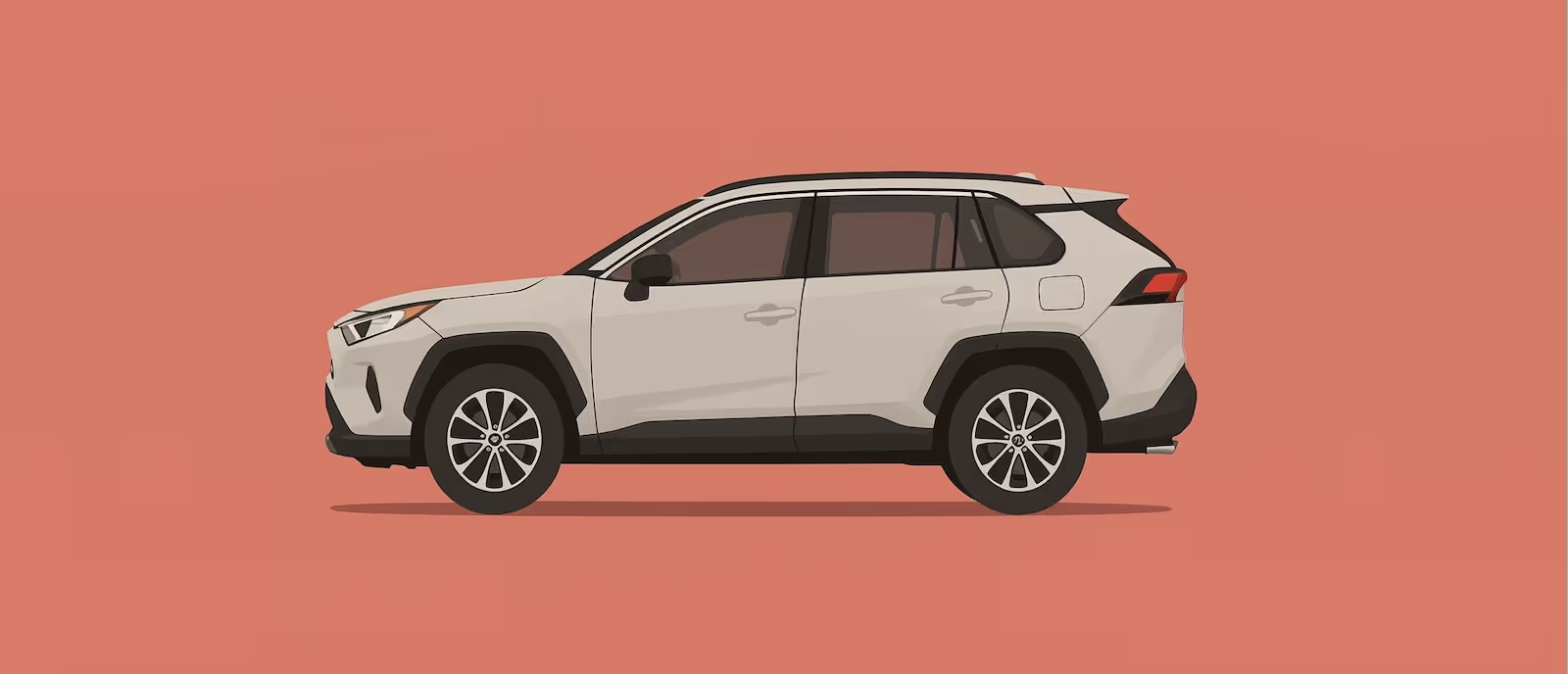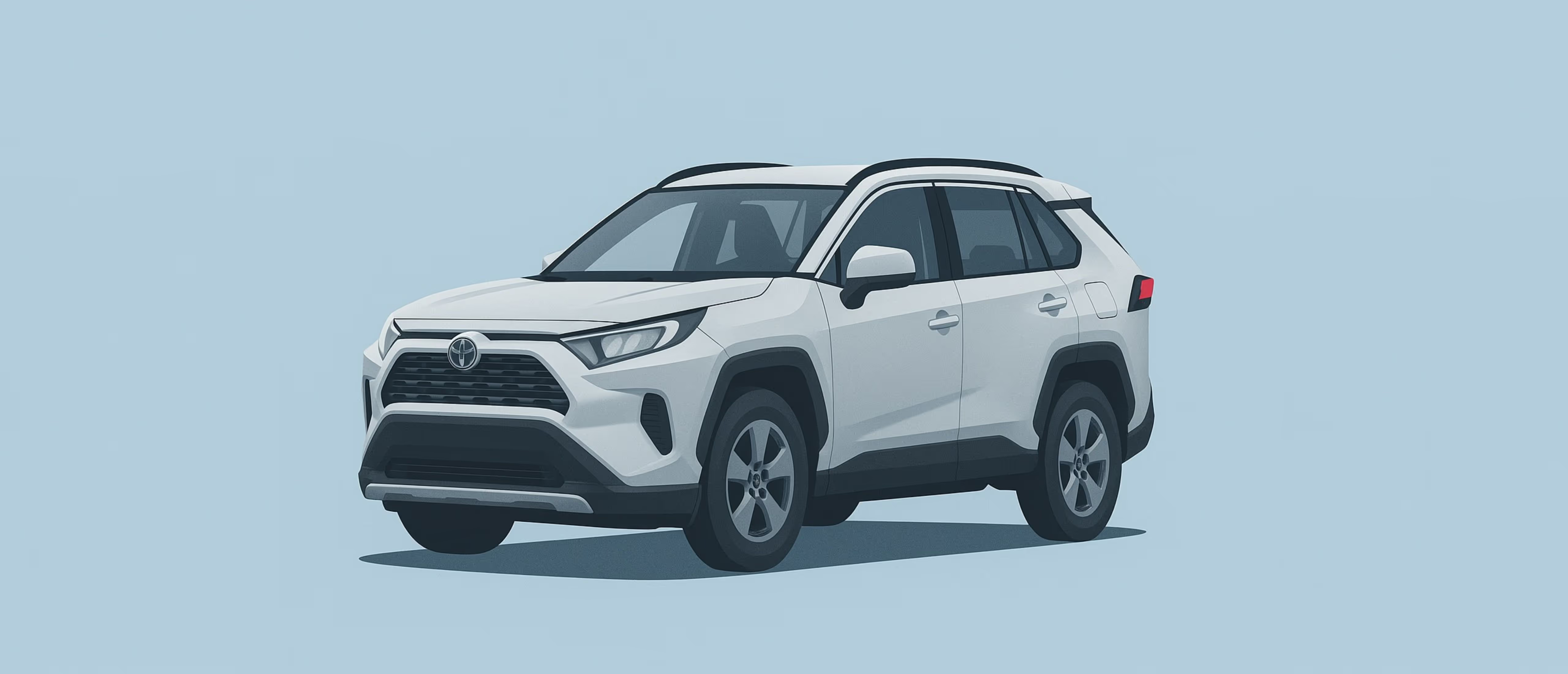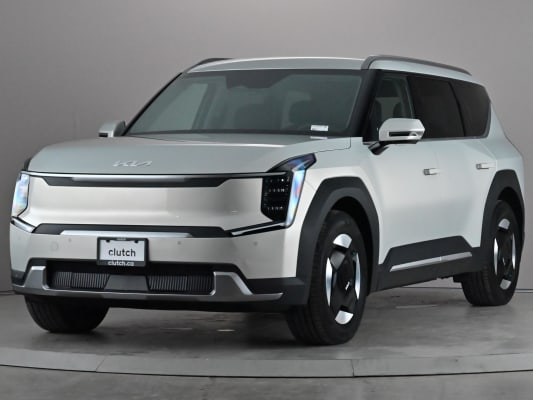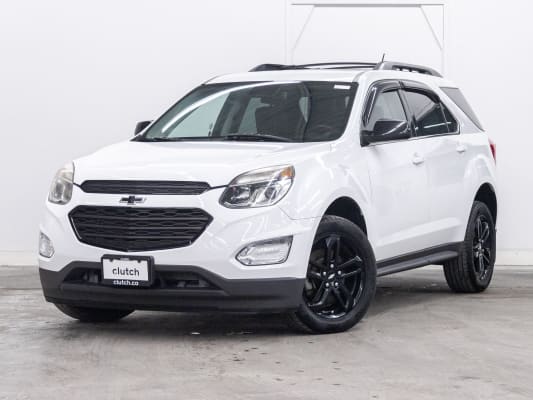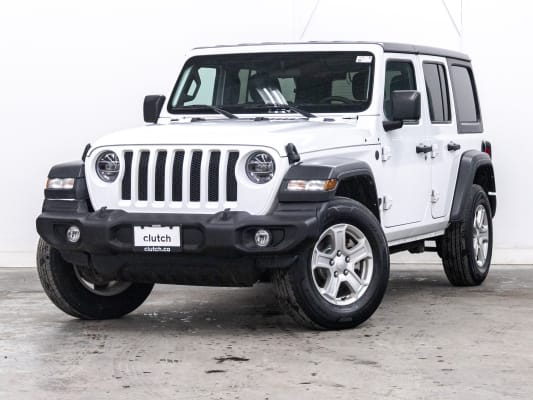The Toyota RAV4 has long been one of Canada’s favourite SUVs. With its dependable all-wheel drive, roomy interior, and strong resale value, it is a top pick for families, commuters, and anyone who needs a practical vehicle that handles our winters with ease. Year after year, the RAV4 continues to earn a reputation for reliability and low ownership costs, making it one of the smartest used SUV choices on the market.
However, even the most trusted models have a few years that fall short. Some RAV4 model years come with known mechanical problems, expensive repairs, or design flaws that can turn an otherwise hassle-free ownership experience into a string of headaches.
If you are shopping for a used Toyota RAV4 in Canada, it pays to know which years to approach with caution. In this guide, we will break down the Toyota RAV4 years to avoid based on owner complaints, recalls, and expert reliability data, so you can shop with confidence and find a RAV4 that will keep you on the road for years to come.
Quick Summary: Toyota RAV4 Years to Avoid
While the Toyota RAV4 is widely regarded as a safe bet, a few specific model years have a track record of issues that can lead to major repair bills. If you are searching for a used RAV4 in Canada, it is wise to be cautious with the following years:
Although not every RAV4 from these years is guaranteed to have problems, they are far more likely to develop costly issues compared to other model years. In the sections below, we will break down exactly what makes these years risky and how to protect yourself if you are still considering one.
2001-2003 Toyota RAV4: Transmission and ECM Failures
The early 2000s marked a popular stretch for the RAV4, with many Canadians drawn to its compact size, fuel efficiency, and optional all-wheel drive. However, the 2001 to 2003 model years are widely considered some of the least reliable RAV4s you can buy.
The biggest issue in these years comes from a flawed Engine Control Module (ECM), also known as the engine computer. In these RAV4s, the ECM often failed due to faulty internal components. When the ECM malfunctioned, it sent erratic signals to the automatic transmission. This led to harsh or delayed shifting, gear slipping, or even complete transmission failure.
In many cases, owners who replaced just the transmission without also replacing or reprogramming the ECM ended up with the same problems all over again. A new ECM and transmission replacement together could easily cost several thousand dollars, making this a financial risk most buyers should avoid.
Additional drawbacks of the 2001-2003 RAV4:
- Older safety features and fewer airbags compared to newer models
- Less refined ride quality and cabin noise insulation
- Many examples now have high mileage, which increases the risk of wear-related failures
If you happen to find a RAV4 from this range that claims to have had the ECM replaced, it is critical to verify it with receipts or dealership records. Otherwise, it is best to steer clear of these years and look for a newer generation.
2006 Toyota RAV4: Excessive Oil Consumption
The 2006 Toyota RAV4 was the first year of a new generation that brought a larger body, a third-row option in some trims, and a more powerful engine lineup. Unfortunately, it also introduced one of the most frustrating mechanical problems seen in the RAV4’s history.
Many 2006 RAV4s equipped with the 2.4-litre four-cylinder engine developed excessive oil consumption at relatively low mileage. The problem was linked to faulty piston rings that allowed oil to slip into the combustion chamber and burn off. Owners reported needing to top up oil every 1,500 to 3,000 kilometres, which, if ignored, could lead to engine damage or even complete engine failure.
Toyota did issue a service campaign for some affected models, but it often required the engine to already be burning oil at a certain threshold before the manufacturer would cover repairs. This left many owners stuck monitoring oil levels constantly or paying out of pocket for costly engine rebuilds.
Why it matters for Canadian buyers:
- Higher oil use in winter months can quickly drop levels below safe marks
- Risk of internal engine damage if the oil runs low
- Resale value is lower for this year due to its widespread reputation for oil issues
If you are considering a 2006 RAV4, ask for detailed oil change and top-up records. It is also smart to have a mechanic perform an oil consumption test before buying.
2007-2008 Toyota RAV4: Steering and Water Pump Complaints
The 2007 and 2008 RAV4 carried over much of the same design and powertrains from 2006. While Toyota made some improvements, these model years came with their own set of concerns that Canadian buyers should be aware of.
Many owners reported hearing a clunking or popping sound when turning the steering wheel, especially at low speeds or when navigating parking lots. The culprit was often the intermediate steering shaft, which developed excessive play over time. Although the issue did not typically affect the vehicle’s immediate safety, it could worsen and lead to costly repairs. Replacing the steering shaft was the usual fix, and while not catastrophic, it was an expense that could easily run over $600 to $1,000, depending on parts and labour.
These RAV4s were also known for premature water pump failures. Around the 100,000 kilometre mark, many owners found coolant leaks coming from the water pump seals. If left unchecked, a leaking water pump could lead to overheating and potentially severe engine damage. Replacing the water pump early was key to preventing bigger problems, but it added another maintenance cost that some owners were unprepared for.
Why it matters:
- A clunky steering feel can reduce driver confidence, especially on winter roads.
- Water pump leaks are common in Canadian conditions where repeated freezing and thawing put extra stress on seals.
- These issues together make the 2007-2008 models less appealing unless there is solid proof of repairs.
If you are looking at a RAV4 from these years, ask specifically about steering shaft replacements and water pump service. A thorough pre-purchase inspection can help spot leaks or worn steering components before you commit.
2009-2012 Toyota RAV4: Rear Suspension and Recalls
The 2009 to 2012 Toyota RAV4 models are popular in Canada thanks to their roomy interior, strong all-wheel drive system, and reputation for dependable performance. However, these years were also affected by a significant safety issue that potential buyers should take seriously.
Toyota issued multiple recalls during these years for the rear suspension arms (often called rear tie rods or trailing arms). These components were prone to corrosion and improper thread lock application. Over time, this could allow the alignment adjustment nuts to loosen, throwing the suspension out of spec. In the worst cases, the arm could separate entirely, leading to a dangerous loss of control.
Toyota did implement recall campaigns to address the problem, but some fixes involved simply reapplying thread lock and torqueing components, which did not always hold up long term. Later recall updates included replacing the arms entirely. If you are considering one of these RAV4s, it is essential to confirm that recall work has been properly completed.
Although the worst years for the RAV4’s oil consumption were earlier, some owners of 2009 models still reported higher-than-normal oil use tied to lingering piston ring concerns. While less common, it is something worth watching for if you are shopping this year.
Why these years are risky:
- Rear suspension failures can lead to sudden instability, especially dangerous on highways or icy Canadian roads.
- Some recall fixes were not permanent solutions, so checking service records is crucial.
- These models are otherwise very solid, which can tempt buyers to overlook the potential suspension hazard.
When evaluating a 2009-2012 RAV4, always check that the vehicle’s rear suspension recalls were performed and, ideally, that the arms were fully replaced. A mechanic can inspect these components during a pre-purchase inspection to ensure they remain tight and corrosion-free.
2013-2014 Toyota RAV4: Transmission Hesitation
The 2013 model year marked the start of a new generation for the Toyota RAV4, with a sleeker design, improved interior quality, and the elimination of the old V6 option in favour of a single four-cylinder powertrain paired with a new six-speed automatic transmission. While this transmission was meant to offer smoother, more efficient shifting, it ended up being a point of frustration for many early owners.
Owners of 2013 and 2014 RAV4s frequently reported that the transmission seemed slow to respond when accelerating from a stop or when trying to pass on the highway. Some described a noticeable delay between pressing the gas pedal and the vehicle actually moving forward. In other cases, the transmission downshifted abruptly, leading to a jerky driving experience.
This hesitation was largely the result of programming in the new transmission’s control software, which Toyota eventually adjusted in later years. However, these early models can still feel less responsive compared to earlier four-speed automatics or the updated programming in 2015 and beyond.
Why it matters:
- Laggy acceleration can be unsettling, particularly when merging onto busy highways.
- The rough shifting does not usually lead to outright transmission failure, but it affects driving enjoyment and long-term confidence in the vehicle.
- Some Canadian owners found this hesitation more noticeable in cold weather, which can be a concern given our climate.
If you are considering a 2013 or 2014 RAV4, be sure to take it for a thorough test drive. Try accelerating from a stop, merging onto highways, and passing at speed to see if you notice any hesitation or harsh gear changes. Asking if the transmission software has been updated at a dealership is also a smart step.
Common Toyota RAV4 Problems to Watch For
Even though the Toyota RAV4 is generally considered one of the most reliable SUVs you can buy, certain issues pop up across multiple generations. Whether you are shopping for a 2006 model or a newer 2016, keeping these common problems in mind can help you make a smarter purchase.
- ECM and transmission failures (2001-2003):
Early 2000s RAV4s suffered from defective engine control modules that led to erratic shifting and, in many cases, complete transmission breakdown. - Excessive oil consumption (2006, some 2009):
The 2.4-litre four-cylinder engine used in these years often burned oil at a rapid rate due to piston ring issues, which could lead to low oil levels and internal engine wear. - Steering intermediate shaft clunks (2007-2008, some others):
Many owners have complained about a knocking sound when turning the wheel. This is typically caused by the intermediate steering shaft developing too much play over time. - Water pump leaks:
Common around the 100,000 kilometre mark on several model years, a failing water pump can lead to coolant loss and overheating if not caught early. - Rear suspension arm problems (2009-2012):
Due to corrosion and recall-related issues, these components could loosen or fail entirely, impacting alignment and driving stability. - EVAP system and check engine lights:
Like many Toyotas, the RAV4 is known to occasionally trigger the check engine light due to evaporative emission system leaks, often from small cracks in hoses or a failed charcoal canister.
Buying Checklist for a Used Toyota RAV4 in Canada
If you have narrowed your search to a Toyota RAV4, paying close attention to these areas can help you avoid headaches down the road. Here is what to look for before making your purchase:
- Check the maintenance history:
A well-maintained RAV4 can easily surpass 300,000 kilometres, but regular oil changes, transmission services, and timely water pump replacements are key. Look for service records that prove consistent care. - Confirm recall and service campaign completion:
Many RAV4s from 2009 to 2012 had critical suspension recalls, and earlier models may have needed ECM or steering shaft work. Ask for documentation showing these repairs were completed. - Inspect for rust underneath:
Canadian winters and salted roads can accelerate corrosion, especially around the rear suspension and undercarriage. Check the frame, wheel wells, and door sills for bubbling paint or rust flakes. - Look for signs of oil consumption:
Check for oil stains under the vehicle, and ask how often the current owner tops up oil between changes. Excessive oil use is common on certain years. - Get a CARFAX or similar report:
A CARFAX report will show if the vehicle has been in any accidents, was part of a rental fleet, or has an open recall. At Clutch, every vehicle comes with a free CARFAX report so you know exactly what you are getting.

The Bottom Line on RAV4 Reliability
The Toyota RAV4 has earned its reputation as one of Canada’s best small SUVs, combining practicality, fuel economy, and impressive long-term durability. But like any vehicle, it has a few model years that come with known issues. From early 2000s ECM and transmission problems to mid-2000s oil consumption and later suspension concerns, knowing which years to be cautious of can help you avoid costly repairs down the road.
If you focus on well-documented maintenance records, check that recalls have been addressed, and invest in a proper pre-purchase inspection, you can still find a reliable RAV4 even from a more problematic year. For the best peace of mind, many buyers simply look to newer, well-rated models that have fewer complaints and updated components.
At Clutch, every used RAV4 goes through a 210-point inspection and comes with a free CARFAX report so you can see its history before you buy. Plus, with a 10-day money-back guarantee, you can shop for your next SUV with total confidence.
Ready to find a Toyota RAV4 that’s built to handle Canadian roads for years to come? Browse our wide selection of inspected, reconditioned RAV4s and get started today from the comfort of your home.
{{widget-1}}
FAQs About Toyota RAV4 Years to Avoid in Canada
What Toyota RAV4 years should I avoid?
It is best to be cautious with the 2001–2003, 2006, 2007–2008, 2009–2012, and 2013–2014 RAV4s. These years are linked to ECM failures, oil consumption, steering and suspension issues, or transmission hesitation that could lead to expensive repairs.
Is the 2006 Toyota RAV4 reliable?
The 2006 RAV4 has a reputation for burning oil due to faulty piston rings. If the problem was never fixed, it can result in engine damage. Look for records showing any oil consumption tests or repairs before considering this year.
What problems do older RAV4s have?
Older RAV4s (especially early 2000s models) often face ECM failures that damage the transmission, oil leaks, water pump issues, and occasional steering clunks. Thorough inspections and service records are key if you are buying an older model.
Do Toyota RAV4s have transmission problems?
Some RAV4 years do. The 2001–2003 models are known for ECM-related failures that damaged transmissions, while the 2013–2014 models had reports of hesitation and rough shifting. Most other years have very few transmission complaints.
How do I know if a used RAV4 had the suspension recall done?
You can ask the seller for proof of recall completion. A CARFAX report may also list recall service. If you buy through Clutch, every RAV4 comes with a free CARFAX and a 210-point inspection that checks for outstanding recalls.




